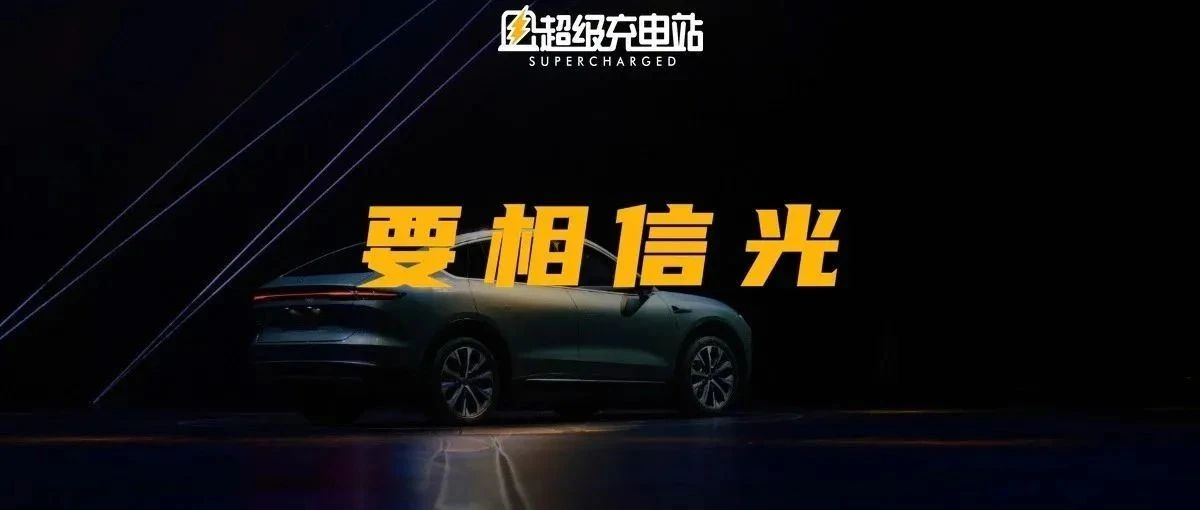Author: Liudahou
The theme of this year’s NIO Day, “Feel the Light”, gave this article the best beginning.

After all, the past year has been a challenge not only for a company, but also for every individual. The question that people used to ask jokingly, “Do you believe in light?” seems to be somewhat inspiring this year.

Although we could not drive to the venue of this NIO Day in the ET7 due to physical reasons, our colleagues at the front still saw NIO cars with license plates from various provinces driving from all directions to Hefei. As NIO put it, the light of loving life converges here.
“If ‘Hello World’ was NIO’s loud announcement of going global last year, ‘Feel the Light’ may be NIO’s wish for the future this year.”
NIO played three user stories as opening. User stories are never in short supply at each NIO Day, and what is even more highly anticipated is the new products. This year’s new products are even more special for NIO.
Save enough for a BMW X3 by using ES6 for three years
After the car owner story, we thought that William Li would bring the highly anticipated all-new ES8 that was significant for NIO, but what came up first was an even more sumptuous dish – NIO’s third-generation battery swapping platform.

So far, NIO has deployed 1,286 battery swapping stations, covering almost all provinces and regions in China. Li also stated that battery swapping is the most popular charging method, and every 2.2 seconds, a NIO sets off from a battery swapping station.NIO has bought back an ES6 from one of its users. This car has traveled nearly 450,000 kilometers, changed the battery more than 1,300 times, and by calculating the money saved, driving an ES6 for three years is equivalent to saving up for a BMW X3, which is not the only highlight of tonight.

The third-generation battery swapping station adopts a brand-new three-position system swapping mode to minimize the battery circulation path. The most direct change is the improvement of swapping efficiency. The swapping time has been reduced by 20%, the battery compartments have increased to 21, and the daily service frequency has reached 408 times, which is a 30% increase in service capacity compared to the second-generation swapping station.

Moreover, the third-generation battery swapping station has also globally initiated the liquid-cooling power module, which can improve the charging and discharging efficiency and participate in bidirectional interaction with the power grid, helping to smooth the peaks and fill the valleys of the power grid. At the same time, NIO has equipped the charging station with two Lidars and two Orin X chips, with a computing power of up to 508 tops. … Has the swapping station started to calculate computing power as well?

In addition to the third-generation charging station, NIO has also released a single pile with a maximum power of 500KW and a maximum current of 660A, which greatly shortens the charging time. More importantly, this brand-new charging pile uses a self-developed liquid-cooled gun line, reducing the weight by as much as 50%. Finally, charging can be done easily with one hand.

In addition to the third-generation charging station, NIO has further upgraded its high-speed navigation and battery swapping experience. The three-party collaboration and evolution of the NIO Power Cloud, vehicles, and battery swapping stations make it more convenient for NIO car owners to travel even further.“`

Regarding the 150-degree battery pack, Li Bin said that it is currently preparing for mass production, and all NIO users can choose to upgrade to the 150-degree battery pack.
In terms of the deployment of charging and swapping stations, NIO is truly sparing no effort. In the past year, NIO has connected the high-speed supercharging network in Geelyn Province, which is relatively unsuitable for the survival of electric vehicles, allowing users in the north to travel with ease. For users who want to drive for travel, NIO is also increasing the layout of charging stations in major tourist destinations across the country. In the future, it will also deploy charging environments on popular self-driving routes such as the Yunnan-Tibet Line and the Western Sichuan Loop, and will open 20 new ones in 2023, including Gannan and Qiandongnan. tourist regions.
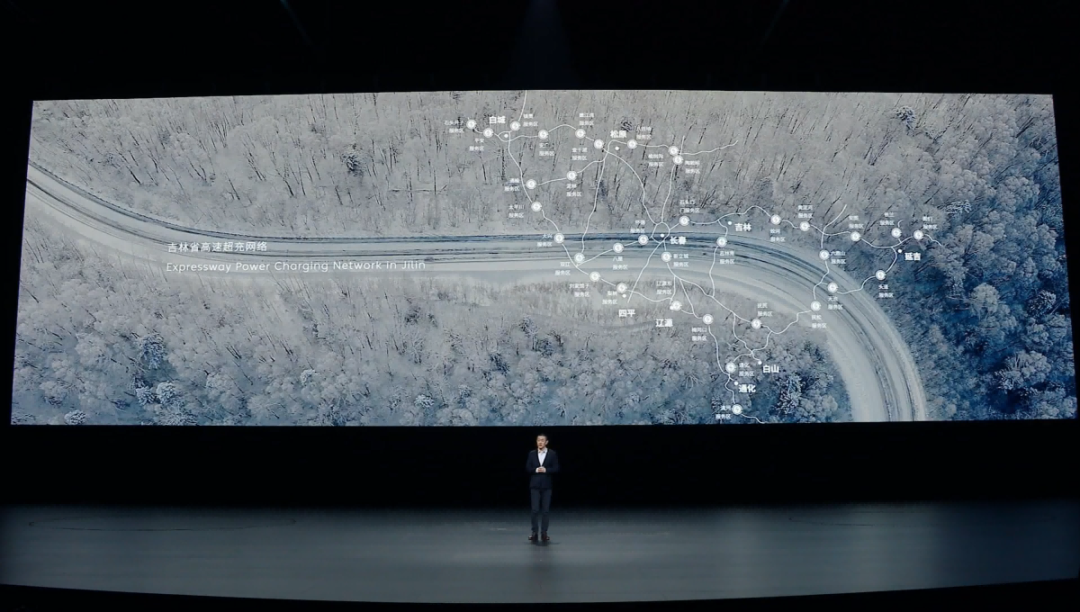
The third-generation charging station and the brand-new 500kW ultra-fast charging pile will be deployed starting from March 2023. By 2025, the previous layout of the large charging station in the 5-vertical-3-horizontal-8-city cluster will be expanded to a scale of 9-vertical-9-horizontal-19-cities. At that time, NIO’s city defense will become several dozen meters wider.

EC7, elegance is king
This year is the year when the NIO NT2.0 platform began deliveries and the year when the existing product line switched from NT1.0 to the new platform. However, for the product planning of the new platform, NIO chose to lead with a brand-new model. After the release and delivery of new models such as the ET7, ET5, and ES7, the light of NT2.0 also began to shine on the old series.

“`The EC7, the first model to be presented at tonight’s launch, is also the first model in the EC series during the NT2.0 era.

” You can always trust NIO’s aesthetics,” and as the flagship of the EC series SUV line, EC7 naturally takes this aesthetics to the next level.

NIO is accustomed to giving each car an English slogan, and EC7’s is “ELEGANCE IS POWER,” with elegance being the way. However, this elegance needs a better angle to be demonstrated. If you look at the front of the EC7, NIO’s latest 2.0 design language will reveal its heritage. But as the perspective turns to the side, differences also emerge.

The curvature of the roof arc is the eternal pride of the Coupe SUV, and even a large five-seater SUV like this, when it incorporates coupe genes, the B-pillar is almost the highest point of EC7’s 1714mm body height from the side. When your eyes cross the intersection of the front and rear doors, EC7 must use a smooth downhill curve to tell you the elegance of the Coupe.

The layout of the familiar pure electric platform is combined with a new posture, with a shorter front overhang than the rear overhang, and the high vertex that thrusts forward. Designers have created a crouching, ready-to-launch sense for the side of the EC7. And this, perhaps, is what NIO calls “the perfect fusion of elegance and power.”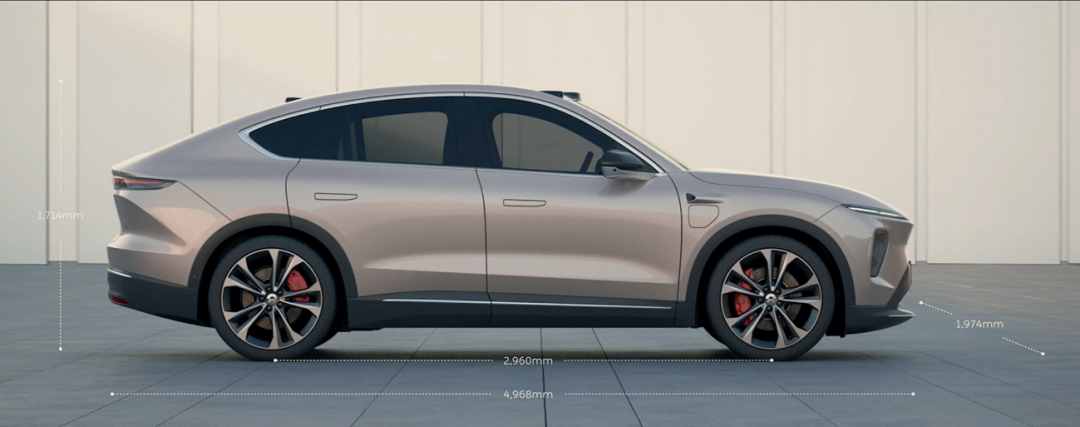
Meanwhile, elegant appearance is not just about its exterior, and smooth body lines are not just a visual enjoyment. With wind resistance coefficient of 0.23Cd, the EC7 ranks first on the global low wind resistance SUV list.

The credit for low wind resistance should be given to the active lifting tail wing. It is not only a prominent feature of the EC7’s appearance, but also the first time this configuration has appeared in the NIO series. It is equipped with both manual and automatic modes, with automatic mode further divided into two gears – the “reducing resistance gear” can reduce wind resistance by 4%, and the “high-speed gear” provides a maximum of 650N additional downforce.


“When a car really needs to increase its downforce, in 99% of the cases, it’s because it has aggressive power.” “NIO doesn’t make slow cars”. With a power layout of 180kW permanent magnet motor at the front and 300kW induction motor at the rear, the 850Nm torque belongs to the familiar flavor of NT2.0, but the new form gives it a 3.8-second acceleration to 100 km/h, making the EC7 the fastest SUV in Nio’s history.

“To go fast, you must also stop well.” Hidden within the 22-inch wheels that can be optionally selected are large 380mm perforated ventilated brake discs. Above the brake discs, six-piston calipers from Brembo can firmly stop an EC7 with a speed of 100 km/h in just 33.9 meters.
Behind the efficient braking lies the quiet contribution of a lightweight all-aluminum body. Meanwhile, the 50:50 front-to-rear axle load ratio, front double wishbone, rear H-Arm multi-link suspension, air suspension, CDC dynamic damping control system, and a series of chassis keywords have stirred our imagination about its chassis quality. After all, after ET5, no one will doubt the handling of NIO’s chassis; after ET7, no one will doubt the comfort of NIO’s chassis either.

With NIO’s several “firsts” in EC7, it naturally will not miss several “firsts” opportunities in the interior. The intelligent dimming panorama sunroof of EC7 is the world’s first to adopt a black-gray neutral base color. Compared with the currently common blue base color, the new base color not only better insulates heat but also ensures that the colors outside the sunroof can be reflected into the car more realistically.
After taking care of the visual senses in the car, it’s time for the tactile senses to take the stage. NIO’s new self-built seat team has brought EC7 a new integrated sports seat. Its high-angle side wing can bring better lateral support and wrapping sensation, thus giving the driver more confidence during cornering.

The queen-size co-pilot has also been updated synchronously, with a newly developed leg rest that is wider and more fitted. One-key zero gravity and one-key lying down modes have also been added to the queen’s package.
However, after saying so much, when we return to the origin of an electric car, the mileage is ultimately unavoidable. EC7 offers three battery capacities, 75kWh version provides 490km of range, 100kWh corresponds to 635km, and 150kWh is 940km.
 The natural factor associated with battery capacity is price. Currently, EC7 offers two versions, basic and first edition, both with different prices depending on the battery capacity and whether battery leasing BaaS is chosen. If EC7 hits your aesthetic and needs, the cost of bringing it home is between ¥418,000 and ¥578,000.
The natural factor associated with battery capacity is price. Currently, EC7 offers two versions, basic and first edition, both with different prices depending on the battery capacity and whether battery leasing BaaS is chosen. If EC7 hits your aesthetic and needs, the cost of bringing it home is between ¥418,000 and ¥578,000.


New ES8, another masterpiece from NIO
In the numerous models released by NIO, there may be none more special than the ES8. At the first NIO Day five years ago, NIO officially launched the first generation ES8. This not only represented the release of a new car, but also represented the complete journey of the NIO brand, to some extent, it also represented NIO showcasing new forces to the future.
Of course, there were also various controversies, such as the overconfident price at the time, and the insufficient mileage of the first generation models. However, it cannot be denied that the first generation ES8 opened the subdivision market of intelligent pure electric SUVs above 400,000 RMB. Li Bin said that although the sales volume of ES8 with 65,000+ units may not be considered significant in the industry, this model achieved a historic breakthrough for NIO and surpassed the sales of traditional fuel-hungry luxury SUVs in the first-tier cities of Beijing, Shanghai, Guangzhou and Shenzhen.
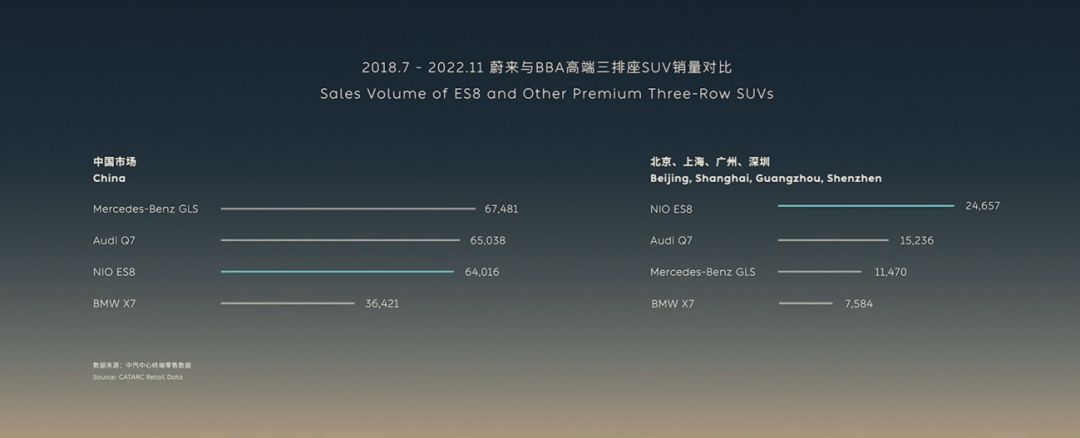
The first-generation ES8 also established a clear product and brand label for NIO, so finally, this old hero of NIO has been given a new look.
In terms of appearance, the most significant change is that the X-bar on the front face of the first generation model has been weakened but not entirely disappeared. It has been better integrated into the entire vehicle design through NIO’s second-generation design language, making the new ES8’s appearance more integrated and concise. If the second generation design language of NIO was the ultimate expression for sedans in the form of the ET7, then the design of the new ES8 proves that NIO’s design language has undergone systematic evolution. It is not simply copying the same style but has been tailored to different models with a unique design.Of course, the Design for AD concept is also continued on the all-new ES8, which makes it even more understated than the first generation. This is NIO’s advanced understanding of “doing and not doing” while highlighting sophistication in both outward and inward expressions.

Under the outline of the second-generation design language, the all-new ES8 is a bigger model with dimensions of 5099mm/1989mm/1750mm and a wheelbase of 3070mm, which is the largest model in all of NIO’s vehicles.

In terms of ADAS, the all-new ES8 is naturally updated to the NT2.0 platform, which is highlighted by the three “horns” on its roof. These three “horns” are a part of the Aquila NIO Super Sensing System. This system has 33 high-performance sensors that generate 8G of data per second. It includes a lidar, a forward-facing 8-million-pixel camera, and an overhead tower-shaped layout that allows the sensors to effectively cross obstacles and reduce blind spots to improve safety. Additionally, there is one 1550nm lidar, seven 8-million-pixel cameras, four 3-million-pixel surround-view cameras, five millimeter-wave radars, 12 ultrasonic radars, two high-precision positioning units, one vehicle-to-infrastructure perception, and one enhanced driver perception.

Under the NAD system, the Adam supercomputing platform naturally forms the basis. The entire series comes standard with four NVIDIA Drive Orin X chips, which house a total of 48 CPU cores, 256 matrix operation units, and 8096 floating-point operation units, resulting in a total of 680 billion transistors and a cumulative computing power of 1016 TOPS. The Adam supercomputing platform’s ISP can process 6.4 billion pixels per second, and it also has an independent complete redundant backup chip and a high-bandwidth data network with a maximum bandwidth of 32GB per second.
The standard new efficient electric drive platform allows the all-new ES8 to have three battery capacity options: 75kWh, 100kWh, and 150kWh, with a maximum range of 900km. In terms of power, the ES8 has a maximum power of 480KW, maximum torque of 850N·m, acceleration of 4.1 seconds per hundred kilometers, and a wind resistance coefficient Cd of 0.250.
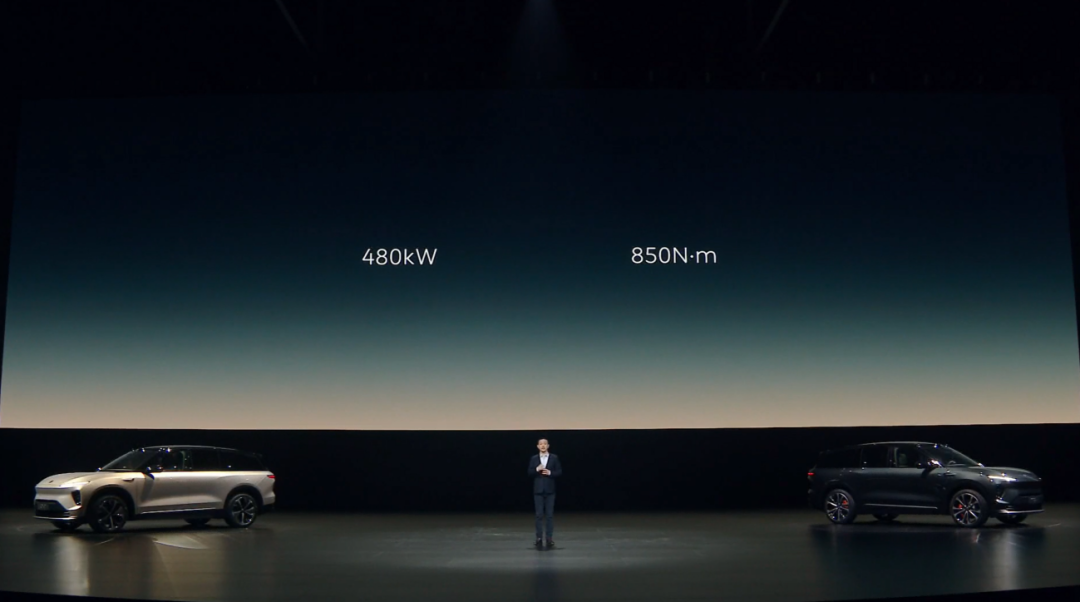
On the basis of the NIO high-performance genes, the all-new ES8 adopts a double-chamber air suspension, CDC dynamic damping control system, and Bosch IPB intelligent wire control dynamic system, which significantly improve driving performance compared to the first generation.

In terms of interior design, the high-end atmosphere is not elaborated here, because there is no doubt about NIO’s taste. In addition to the comfort and intelligence configurations such as the “queen throne” and NOMI that the first generation had, the new ES8 also comes with a self-developed modular seat frame, according to NIO, this is the first modular seat frame platform which is wholly self-developed by an automotive company in China. Simply put, the comfort level and other parameters of the seats can be upgraded and adjusted through OTA.

The second-row seats offer an optional “executive island” and a spacious central aisle with an integrated large armrest layout. When asked about when NIO will make an MPV, Li Bin said that the comfort of ES8’s second-row seats is already better than that of many MPVs, and an MPV without supercar performance is not a good SUV.As a large SUV with 6 seats, the third row is particularly important. The design adopts a hugging shape and is equipped with electrically adjustable seats, third-row air conditioning vents, Type-C charging ports, and cup holders. The overall seating space of the third row has been optimized compared to the first generation ES8.
Other comfort configurations include an intelligent five-zone independent air conditioning system, a standard enhanced 7.1.4 audio system, and a brand-new N-Box enhanced entertainment host, and so on.
So far, the new ES8 has been fully updated in exterior design, interior texture, intelligent driving, and performance control. NIO’s understanding of high-end and luxurious 6-seat SUVs may have set an example for everyone again. NIO’s entire model range has been updated to a new platform, architecture, and design language. The new ES8 will also take over the banner of the first-generation ES8 and become the next new starting point for NIO. The new ES8 will be officially delivered in June 2023, with a price range of 528,000 yuan to 638,000 yuan.
At the end
It’s time for the “At the end” section again. NIO has always been driving on the electric vehicle track in its unique way, whether it is the identifiable iconic design, the currently unique battery swapping system, the constantly upgraded electric propulsion platform, or NIO Day, which keeps car owners in the center of the stage every year, all make the brand’s territory increasingly clear.
We originally wanted to title the last paragraph as “The Future of NIO”, but we found that at this year’s NIO Day, the furthest future that NIO gave us was only 2025, and the things at this time point were still very determined and full of details. Compared with the second 100,000 vehicles and the third 100,000 vehicles that took only seven months, the delivery volume of new car models on the NT2.0 platform is also steadily increasing. Perhaps NIO does not need to look too far into the future, and we also won’t speculate anymore.
This article is a translation by ChatGPT of a Chinese report from 42HOW. If you have any questions about it, please email bd@42how.com.
